Explore our curated list of 7 outstanding sample software documentation examples. Learn key strategies and actionable takeaways to improve your own docs.
Excellent software documentation is the backbone of any successful product, transforming complex code into understandable, actionable resources. But what separates the merely adequate from the truly exceptional? It’s not just about listing features; it’s about creating a clear, intuitive, and empowering experience for users, whether they’re seasoned developers or first-time customers. Mastering the craft requires adhering to core technical writing best practices to ensure clarity and user-friendliness in every guide.
In this comprehensive listicle, we deconstruct seven outstanding sample software documentation examples from industry leaders like Google, Swagger, and Atlassian. We will move beyond surface-level descriptions to provide a deep strategic analysis of what makes each one effective. For every example, you’ll find direct links, screenshots, and a breakdown of specific, replicable tactics you can apply directly to your own projects. Our goal is to equip you with actionable takeaways to build documentation that reduces support tickets, accelerates user adoption, and becomes a genuine competitive advantage. Get ready to transform your documentation from a simple manual into a powerful asset.
Need to create world-class documentation quickly? Let DocuWriter.ai handle the heavy lifting. Our AI-powered platform generates high-quality, developer-friendly documentation in minutes, not weeks, freeing your team to focus on what they do best: building great software.
Creating high-quality software documentation often starts not with writing code samples, but with establishing a consistent and clear style. The Google Developer Documentation Style Guide is an exemplary resource that provides a comprehensive framework for achieving this. Instead of being a software platform, it’s a living set of rules and best practices that Google’s own technical writers use, offered publicly and completely free of charge. This guide is a masterclass in creating effective, accessible, and professional technical content.
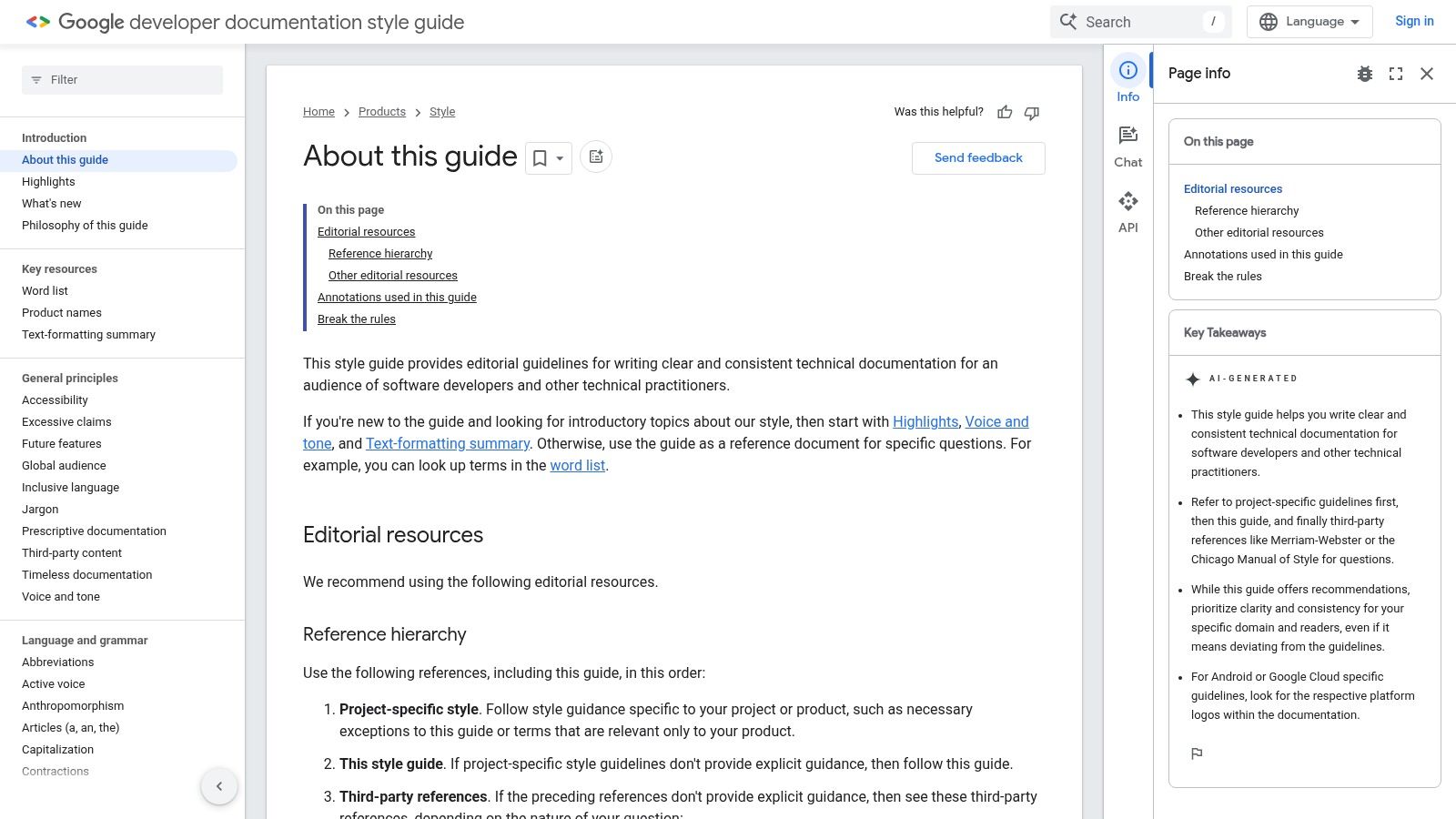
It offers an end-to-end blueprint covering everything from high-level principles like voice and tone to granular details like grammar, punctuation, and formatting. The guide’s real power lies in its actionable examples, which double as sample software documentation patterns that your team can adopt immediately. You can find concrete “do/don’t” tables, sample phrasing for common scenarios, and specific guidance on creating inclusive language.
What sets the Google Style Guide apart is its role as a “documentation-as-code” enabler. By providing a single source of truth for style, it eliminates ambiguity and empowers engineering teams to write consistent documentation without constant oversight.
This resource is entirely free and accessible via its URL, making it incredibly easy to operationalize across development teams. While some advice is specific to Google’s ecosystem, the vast majority of its principles are universally applicable. This focus on clear, modern standards aligns perfectly with the principles outlined in software documentation best practices.
Ultimately, Google’s guide is the perfect starting point for any organization looking to elevate its documentation from an afterthought to a polished, user-centric product.
Struggling to maintain documentation consistency across your team? DocuWriter.ai can help automate style guide compliance and generate high-quality, standardized documentation effortlessly.
Read the Docs – Example Projects is a curated gallery of real, working documentation sites built with Sphinx and MkDocs. Each entry offers live rendered docs paired with a GitHub repository you can clone and adapt as your own sample software documentation.
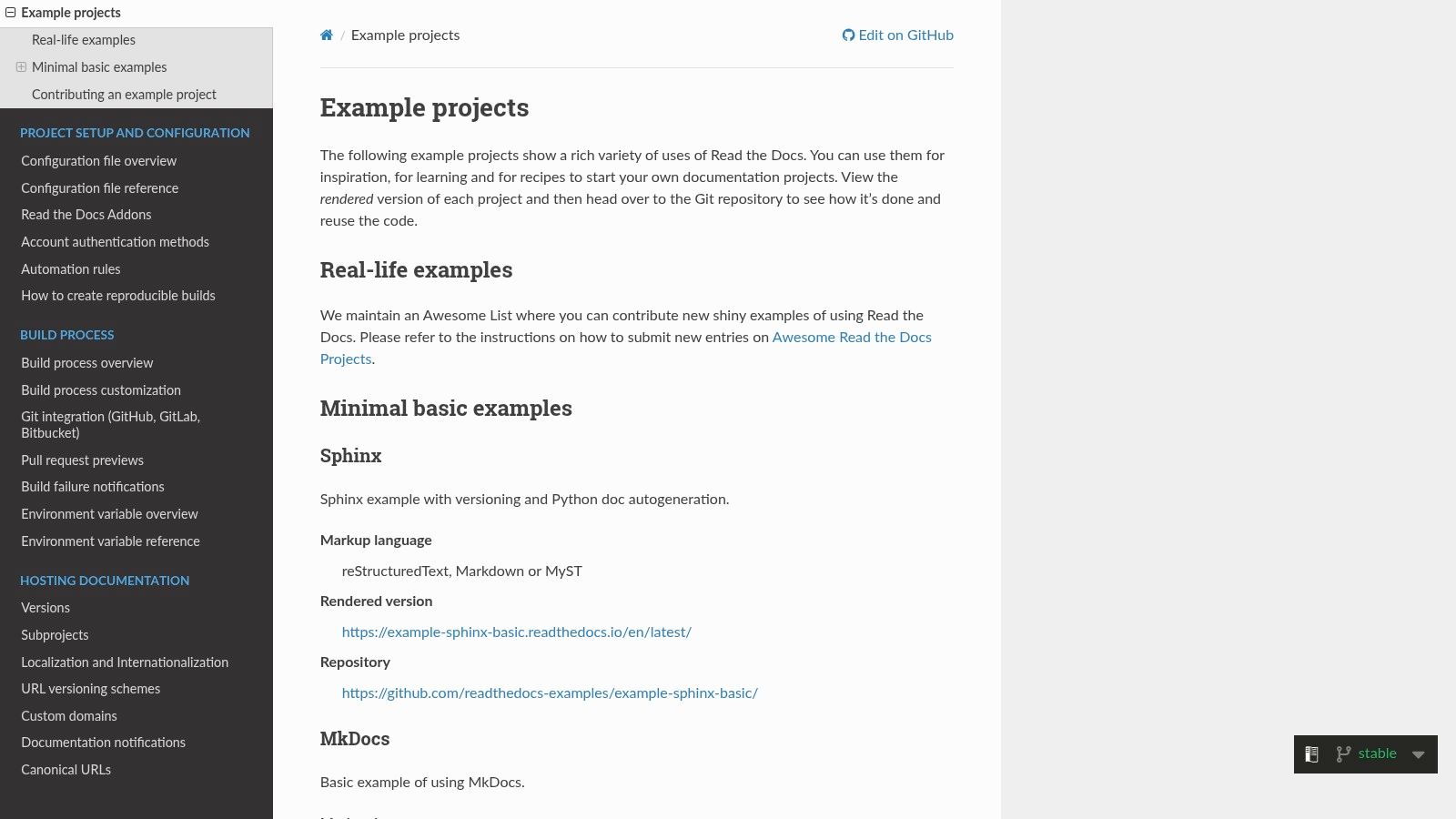
Access is free for open source projects, while private or enterprise docs require a paid plan starting at $15 per month. No installation or shipping is needed—your docs build automatically on each Git push. The clean interface includes sidebar navigation, full-text search, and a version switcher for seamless browsing.
The Example Projects gallery curates only mature, actively maintained docs, sparing you from outdated or incomplete samples. It demonstrates versioning, auto-API generation, theming, and hosting workflows in context. An “Awesome List” of additional repositories provides deeper inspiration and patterns.
Read the Docs flips the typical style-guide approach by providing executable examples rather than rules. Developers learn by inspecting real build configs, theme overrides, and YAML settings in a live environment. This hands-on approach reveals behind-the-scenes details like webhook triggers, docstring conventions, and continuous deployment for docs.
make html or mkdocs serve locally to explore file structureLooking for a faster way to generate high-quality, standardized sample software documentation? DocuWriter.ai can help automate style guide compliance and produce consistent, polished docs in minutes.
For teams already embedded in the Atlassian ecosystem, creating documentation doesn’t have to start from a blank page. Atlassian Confluence offers a robust library of documentation templates and blueprints designed to accelerate the creation of knowledge bases, how-to articles, and project documentation. These are not just static layouts; they are interactive frameworks packed with macros, variables, and indexing features that streamline the entire process. This approach turns documentation from a daunting task into a structured, repeatable workflow.
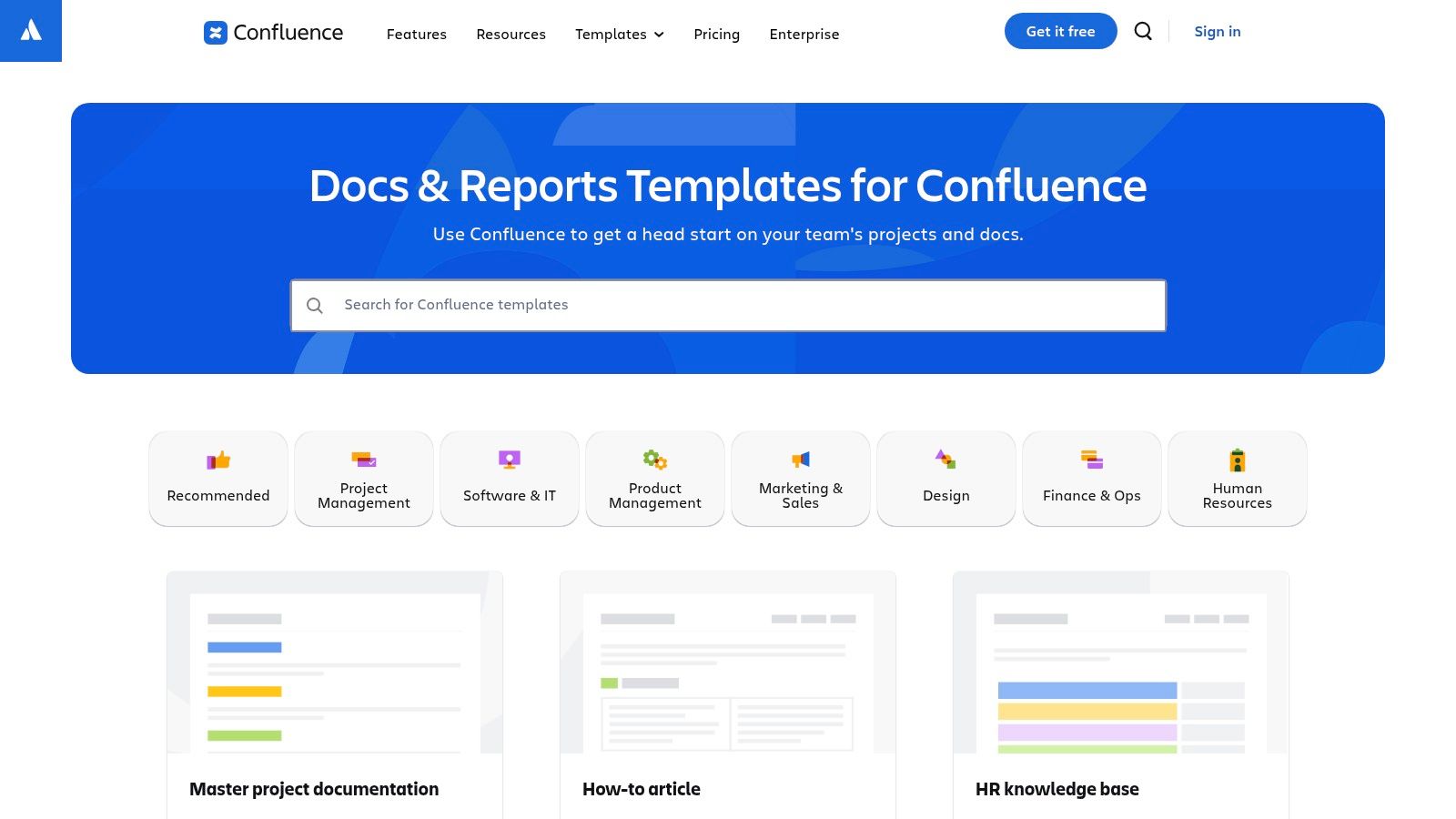
With over 100 templates, teams can quickly find a starting point for virtually any documentation need. Blueprints take this a step further by auto-generating entire page trees with indexes and navigation, making them an excellent source of sample software documentation structure. This built-in guidance is particularly valuable for non-writers, empowering engineers and product managers to produce clear, usable documentation without extensive training.
Confluence’s strength lies in its tight integration with the development lifecycle, particularly with Jira. By providing templates directly within the collaborative workspace, it lowers the barrier to entry for documentation creation and maintenance. This “documentation-in-place” model encourages a culture where documentation is a continuous, team-wide responsibility rather than an isolated task.
Access to these templates is included with a Confluence subscription, which offers various pricing tiers, including a free plan. The platform’s powerful search and collaborative editing features further enhance its utility, making it a central hub for team knowledge. The templates can be viewed and utilized at https://www.atlassian.com/software/confluence/templates/categories/docs-and-reports.
Confluence templates provide a powerful, out-of-the-box solution for teams looking to build and scale their internal and external documentation efficiently.
Struggling to maintain documentation consistency across your team? DocuWriter.ai can help automate style guide compliance and generate high-quality, standardized documentation effortlessly.
Swagger’s OpenAPI ecosystem is the de facto standard for creating sample software documentation for REST APIs. It combines the official OpenAPI 3.1 specification with an in-browser Swagger Editor and the canonical Petstore example. Developers can draft YAML or JSON schemas, preview interactive docs, and generate client/server code—all from a free, open source toolkit.
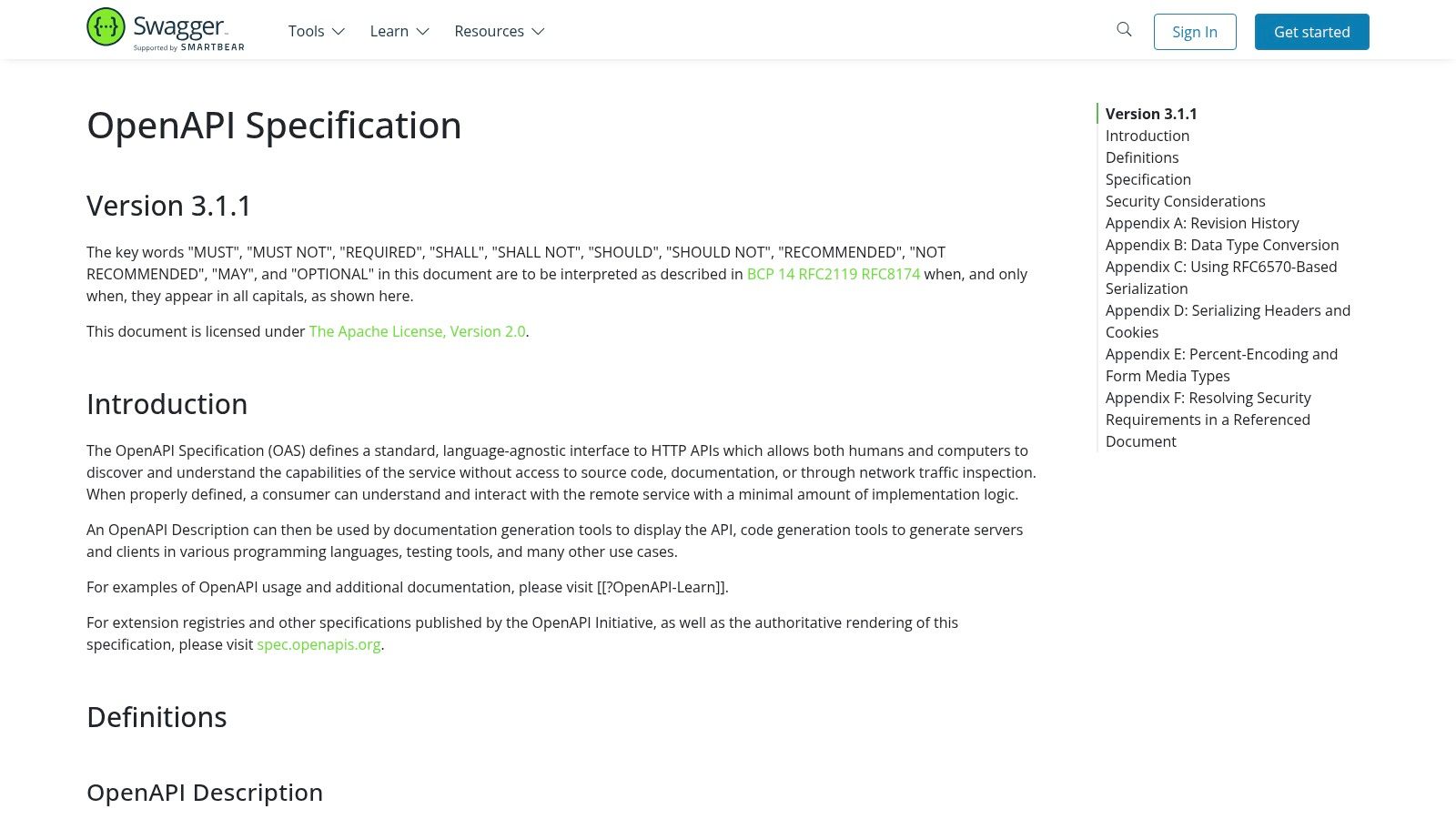
Swagger’s platform offers a unified workflow:
Swagger stands out by treating documentation-as-code. The Petstore example serves as a hands-on template, illustrating best practices for path parameter usage, response schemas, and reusable components. The live editor enforces schema validation, reducing errors before deployment.
For large teams, this means:
Learn more about Swagger (OpenAPI) – Spec, Editor, and Petstore Examples on docuwriter.ai: Learn more about Swagger (OpenAPI) – Spec, Editor, and Petstore Examples
Struggling to maintain consistent, interactive API documentation? DocuWriter.ai can automate style guide checks and generate polished, standardized docs without manual overhead.
For teams building APIs, ReadMe serves a dual purpose as both a powerful documentation platform and an extensive learning resource. While it’s a paid SaaS product for hosting documentation, its Resource Library is a freely accessible goldmine of guides, checklists, and real-world teardowns. This makes it an invaluable hub for anyone looking to understand the mechanics behind truly effective, interactive API documentation.
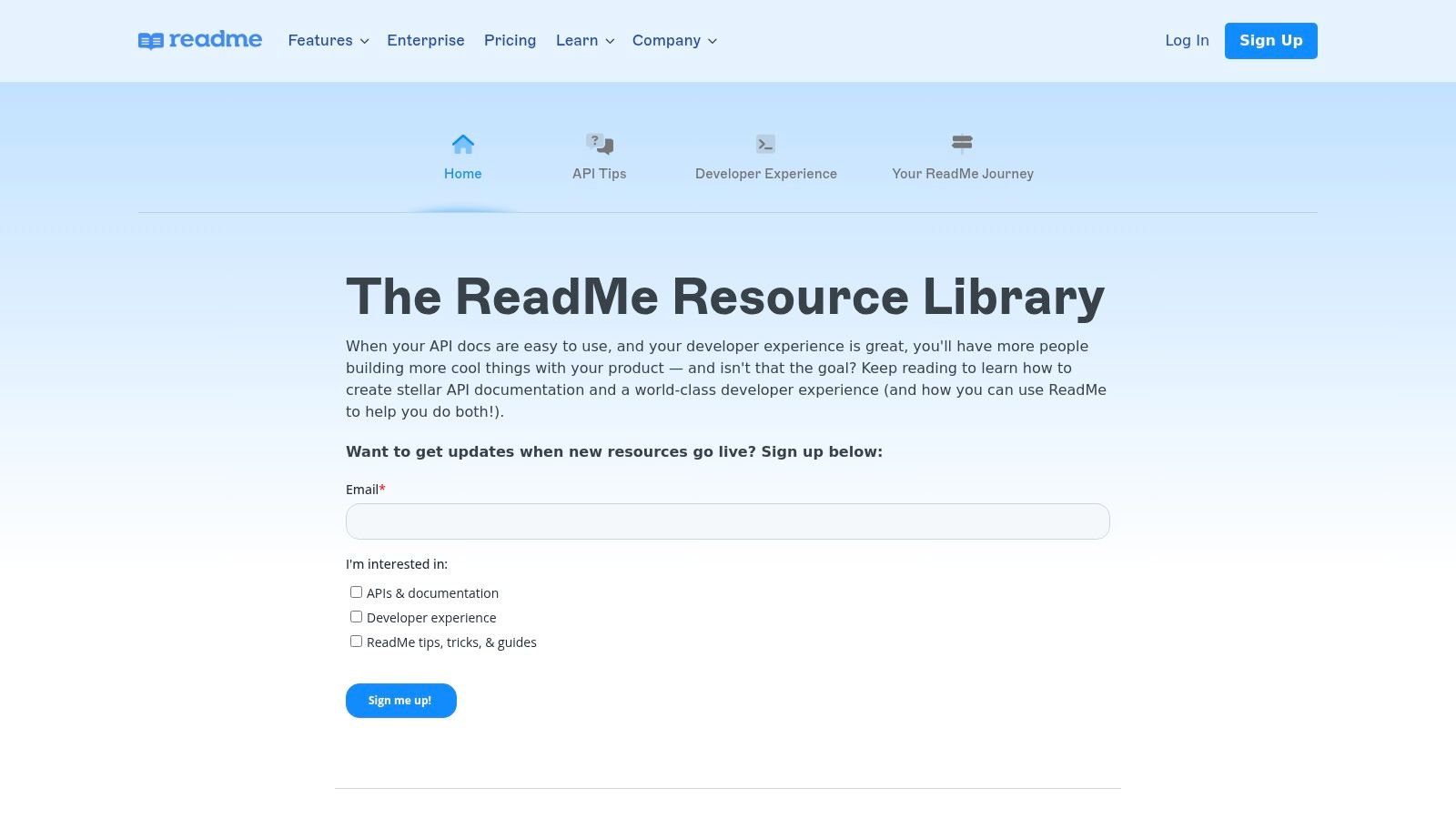
ReadMe’s platform is famous for its built-in interactive “Try It!” console, which allows developers to make live API calls directly from the documentation. This feature turns static reference material into a dynamic, hands-on playground, drastically reducing the time it takes for a developer to make their first successful API call. The resources section deconstructs why these interactive elements are critical, offering a wealth of sample software documentation patterns for API-first companies.
What distinguishes ReadMe is its focus on the developer experience (DX) of using an API. The platform and its resources champion the idea that documentation should not just inform but also enable. By embedding interactivity and providing clear, component-based structures, ReadMe helps companies treat their documentation as a core part of their product.
While the full platform is a subscription service, its free resource library provides enough strategic insight to improve any API documentation project. Its articles offer a blueprint for creating a developer hub that actively helps users succeed, which is a far more powerful approach than simply listing endpoints and parameters.
ReadMe is an essential tool and resource for any organization where an API is the central product, offering a clear path to creating documentation that developers will love to use.
Want to bring interactive, ReadMe-style quality to all your documentation? DocuWriter.ai can generate clear, user-friendly guides and API references with integrated code samples, saving your team valuable time.
GitBook offers a modern, streamlined platform for creating and hosting knowledge bases, making it an excellent environment for spinning up polished documentation quickly. It combines a user-friendly editor with powerful features like Git-sync and public hosting, allowing teams to go from concept to a live documentation site with minimal friction. Its strength lies in providing ready-to-use templates that serve as a fantastic starting point for any sample software documentation project.
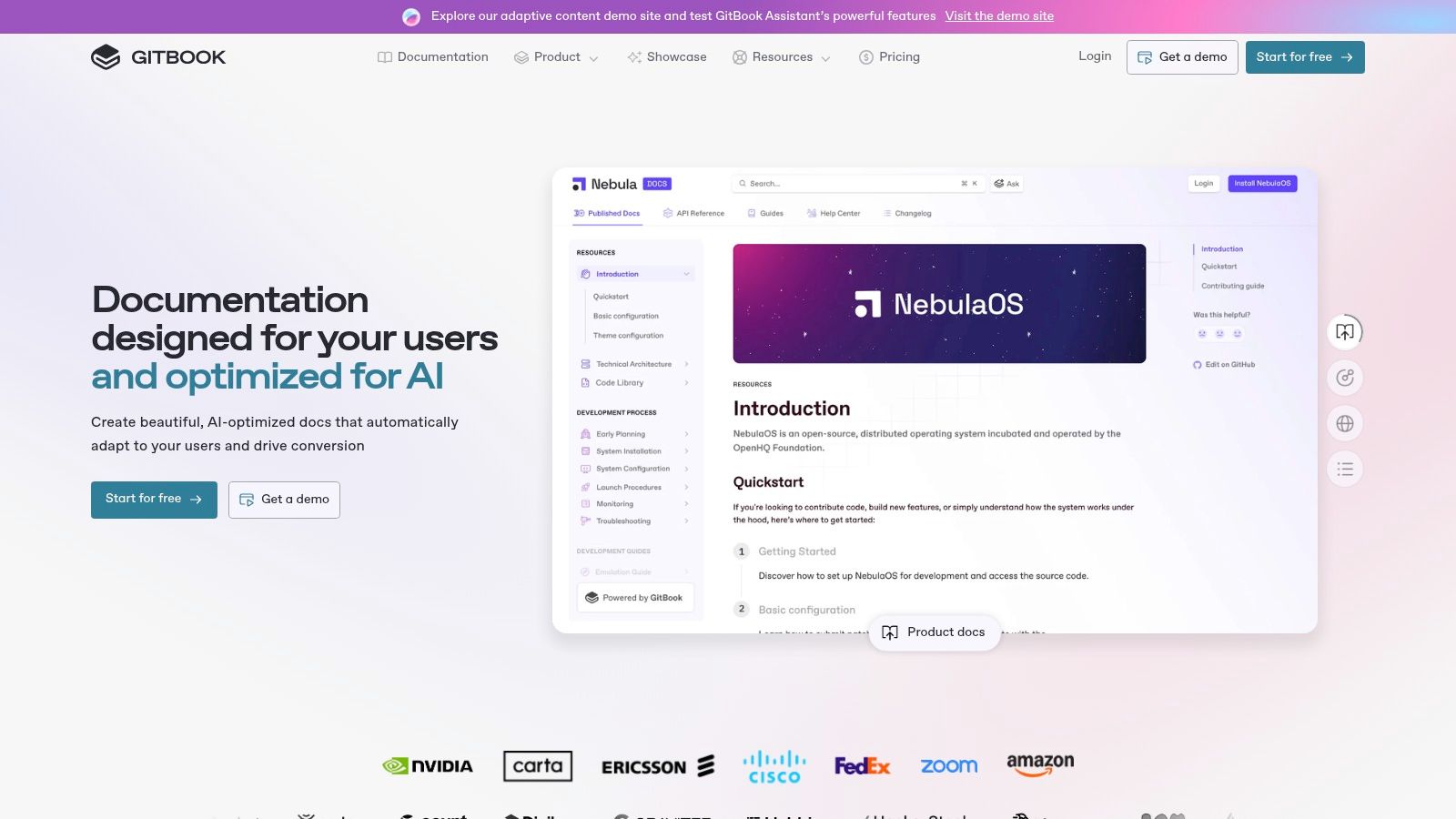
The platform is designed around collaboration and ease of use, featuring one-click templates for product guides and API docs complete with pre-built components like hint blocks and tabbed code examples. This templated approach ensures a clean, modern reader experience right out of the box. GitBook is especially effective for public-facing knowledge bases where clarity and professional presentation are paramount.
GitBook excels at lowering the barrier to entry for creating high-quality, hosted documentation. It abstracts away the complexities of build pipelines and hosting, allowing teams to focus entirely on content creation. This makes it an ideal choice for startups and teams that need to publish professional docs without a dedicated technical writer or DevOps resources.
While GitBook offers free plans for open-source projects, its commercial plans have evolved, so it’s wise to verify current pricing. Its ease of use makes it one of the most accessible software documentation tools available. The platform’s integrated search and version control via Git-sync provide the core functionality needed for most documentation projects.
gitbook.io subdomain to quickly share your documentation with users for feedback.GitBook is a powerful solution for teams that prioritize speed and user experience over deep customization, providing everything needed to launch beautiful, functional documentation.